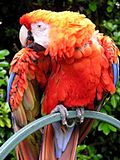Raycol was a two-color additive film color process developed by the chemist Anton Bernardi in 1929. It was used by Maurice Elvey to film The School for...
2 KB (148 words) - 10:35, 30 June 2024
of color photography, including Kinemacolor, Prizma, Technicolor I, and Raycol. The primaries are added together in varying proportions to reproduce a...
15 KB (899 words) - 05:01, 5 August 2024
blue channel, on processes such as Kinemacolor, Prizma, Technicolor I, Raycol, etc., producing shades of black, red, green and yellow. Alternatively,...
54 KB (4,161 words) - 17:04, 3 October 2024
Scandal. It is also the only feature-length film shot using the unsuccessful Raycol colour process, and marked the screen debut of Sally Gray. The film was...
5 KB (313 words) - 03:56, 4 October 2024
The School for Scandal Flower Seller directed by Maurice Elvey, filmed in Raycol color process, lost film uncredited 1930 The Chinese Bungalow Charlotte...
37 KB (3,539 words) - 16:03, 10 September 2024
Lenticular (3 color) Rodolphe Berthon N/A (16 mm home movies only) (1928) Raycol 1928 Additive (2 color) Maurice Elvey The School for Scandal (1930) Splendicolor...
13 KB (458 words) - 17:38, 9 February 2024
Forde 1930 School for Scandal Maurice Elvey Only film shot in the abortive Raycol colour process. Only screened in black-and-white 1930 Too Many Crooks George...
22 KB (617 words) - 14:52, 14 October 2024


